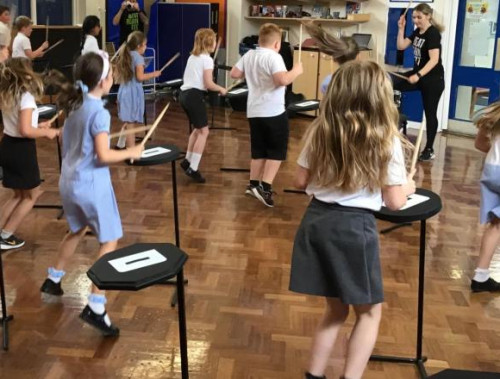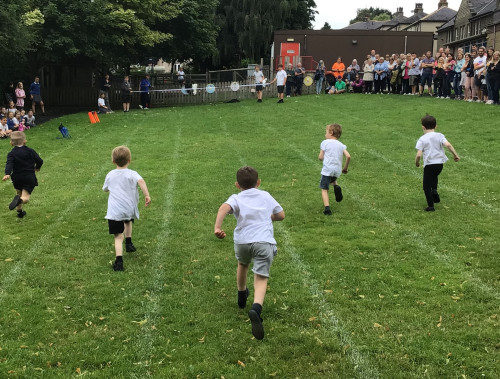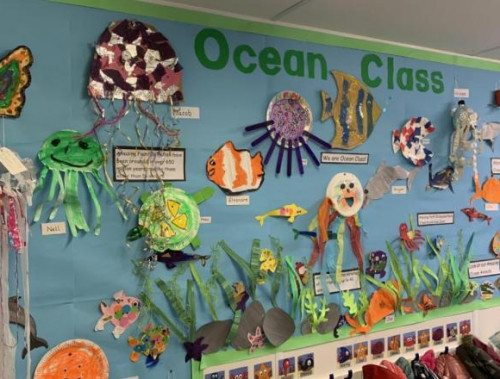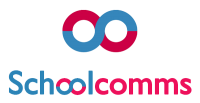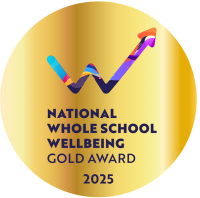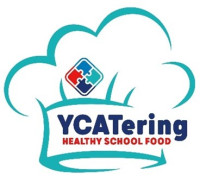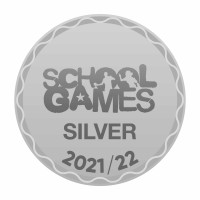Reading & Phonics
"Staff who teach phonics demonstrate a good subject knowledge"
(Ofsted, November 2021)
Parent Information about how we teach Reading at EYFS and Key Stage 1
Our school uses the Little Wandle Letters and Sounds Revised systematic synthetic phonics programme to deliver daily phonics lessons.to our EYFS and KS1 children. Little Wandle Letters and Sounds Revised is closely aligned to the Collins Big Cat Reading scheme which reinforces and supports the children's learning. The teaching and non-teaching staff have undertaken CPD training in using and delivering the scheme.
Bradleys Both community Primary School continues to work with the Burley and Woodhead English Hub in further extending our teaching and learning provision.
Visit little wandle letters and sounds to learn more about the systematic synthetic programme.
An important and valuable element of teaching our children phonics and reading is how parents and carers are able to engage with their children and further support them at home. The Class 1 teaching team provide an insight into the way we teach phonics and reading in the Autumn term. This is followed up with information sent home to guide parents and carers.
Support for parents, including resources and video clips can be found at: www.littlewandlelettersandsounds.org.uk/resources/for-parents/
Throughout Key stage 1 and early Key stage 2 we aim to provide our children with the very best start.
The children love the familiarity of the characters.
- Teach - using systematic phonics resources and training that really work
- Practise - with more decodable readers than any other reading programme
- Offer richer reading - through a huge selection of stories with children's best-loved characters
- Bridge the gap - with support for the transition from phonics into richer reading
- Make progress - through careful levelling
- Support parents - with detailed inside cover notes in every title
Phonics teaching is a fun and child centered approach to teaching literacy through synthetic phonics. Letters and Sounds is used as our phonics teaching programme. A range of resources are used throughout the school to deliver the content of letters and sounds. Letter phonemes and graphemes are taught using a multi-sensory approach which caters for different children's learning needs and styles.
The sounds are taught in a specific order in phases as outlined in Letters and Sounds. This enables children to begin building words as early as possible.
The five phases taught in Phonics are;
- Learning the letter sounds
Children are taught the 44 main letter sounds. This includes alphabet sounds as well as digraphs such as sh, th, ai and ue. - Learning letter formation
Using different multi-sensory methods, children learn how to form and write the letters. - Blending
Children are taught how to blend the sounds together to read and write new words. - Identifying the sounds in words (Segmenting)
Listening for the sounds in words gives children the best start for improving spelling. - Tricky words
Tricky words have irregular spellings and children learn these separately
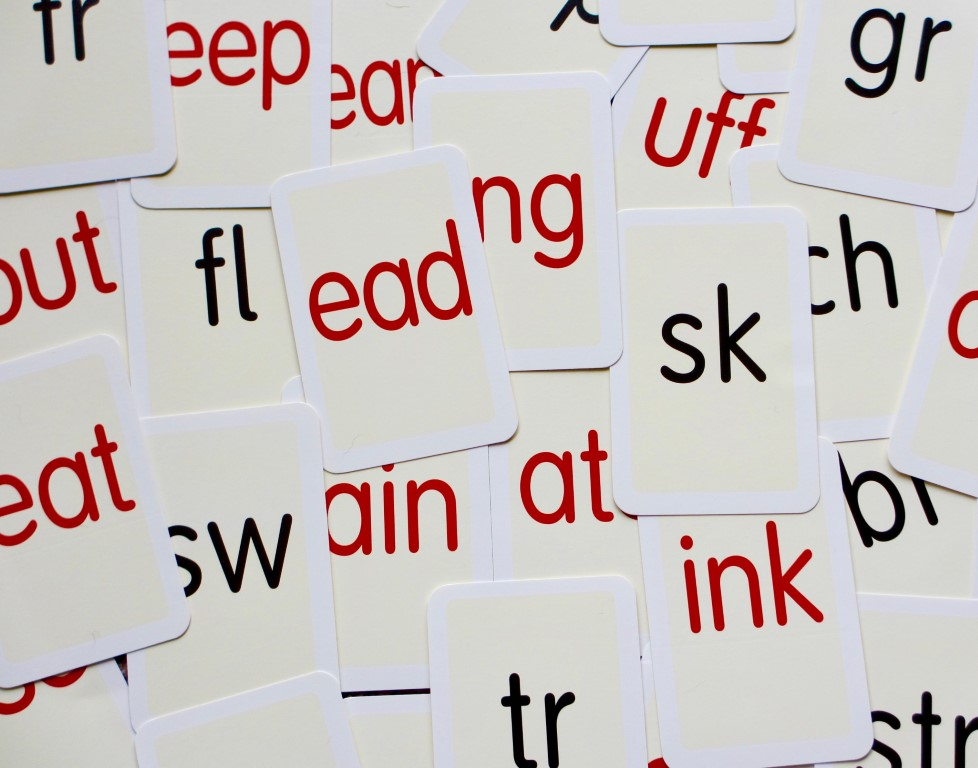
Parent information about how we teach Reading in Key Stage 2
Fluency Orientated Reading Instruction (FORI)
In Key Stage 2 our children transition from group reading to whole class and partner reading. We use a model known as ‘Fluency’ (FORI) and this involves the teacher selecting a focus text to use each week.
Purpose:
- To build fluency and comprehension of age-appropriate text through repeated reading, text-related discussion, and strong teacher support and guidance before and after reading
- To provide increased time with ‘eyes on the text’ for developing readers through exposure to print
- Enable children to access a wider genre of rich, varied reading material
- Increase vocabulary range
- Increase reading stamina
- Improve fluency, expression and intonation whilst reading aloud
‘Fluency’ as a teaching approach has been researched and shown to be effective for children from Year 2 and above (children making the transition from word recognition to simultaneous comprehension).
For children who cannot access the level of the text being used, we provide alternative arrangements. This might be a small reading group, or 1:1 reading with an adult where required. Children who are identified as those to be requiring further development will also continue to receive 1:1 reading with an adult alongside whole class reading.
We aim to use texts that provide an adequate level of challenge – a ‘frustrational level’ - aimed at the core of the class. Like with anything being taught, opportunities to make the text as relevant as possible and link with cross-curricular teaching are important.
How it works:
Echo Reading
Echo Reading is a teacher-assisted oral reading strategy that includes both teacher modelling and participation. It is ideal for the initial read of a text at the beginning of the week. The teacher chooses an appropriate ‘chunk’ of the text to read to the class, demonstrating volume control, intonation and expression, and then the class echo this back.
Children need to be taught that they are active participants when being read to, and that they should be following the text as they hear the words being read. Initially, the teacher might only read a sentence before having this echoed back, but as children become more confident with the model (or higher up in school), longer passages can been read and echoed back.
Children also need to be trained to read as a group rather than racing ahead/falling behind. This may require ‘mumble reading’ for some not yet confident, and slowing down for others more confident.
As children read, the teacher moves around the room, ‘tuning in’ to different children.
Choral Reading
Choral reading is an oral reading strategy in which the teacher and children read simultaneously. It incorporates less support than echo reading, but still enables modelling and demonstration of intonation, speed, volume, pronunciation and expression. Children are asked to mimic the way the text is being read. This may be more suitable for classes higher up in school as an alternative to the initial echo read where deemed appropriate.
As with echo reading, the teacher moves around the room, ‘tuning in’ to different readers, praising and encouraging effort.
Partner Reading
In partner reading, two similarly matched children work together, each with a specific role. One is the reader; one is the supporter. After specified sections have been read, they swap roles. Children start by hearing each other read. The supporter role is to help with pronunciation, provide feedback on pacing and expression, and observe signs of progress throughout the week. Children ensure that if they read a particular section one day, the next day they switch. At the end of the read, children test each other on the selected vocabulary and try to put each word into a sentence. Extra challenges need to be set for those who are more able: this may be tasking them with finding examples of specific grammar and punctuation being taught, or use more than one word in a high quality sentence.
Comprehension Questions
At the end of the week, when children are familiar and fluent with the text, they are given 4 - 5 comprehension questions to answer. The questions may focus on particular reading comprehension skills, and the available marks will be visible to the children; this enables children to develop awareness of the quality of answers. When answers are given, children get to hear how different pairs have approached this, and the teacher highlights ‘model’ answers with explanation of why they are effective.
Fluency Vocabulary
Generally, between 6 and 10 focus words will be chosen by the teacher prior to giving the children the text. These words may be chosen due to being deemed to be challenging, or they may be synonyms that children would benefit from in relation to other current areas of learning. These words are displayed within the classroom for the duration of the week, and they are used and explored by children thus widening their vocabulary.
Further Reading
Effects of Fluency Oriented Instruction on Reading Achievement and Motivation Among Struggling Readers in First Class in Irish Primary Schools by Gene Mehigan (2016)
Whole Class or Small Group Fluency Instruction: A Tutorial of Four Effective Approaches by Melanie R. Kuhn (2020)
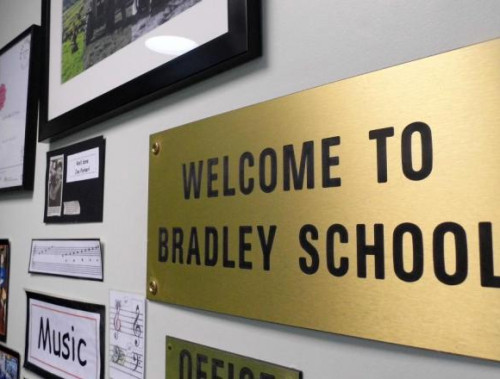
![IMG_1116[1]](/images/uploads/img-3-535.jpg)
